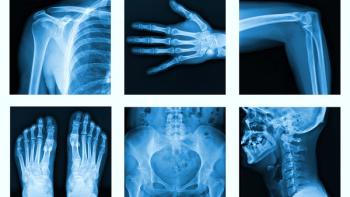AAVantgarde Bio, a clinical-stage, biotechnology company specializing in inherited retinal diseases, announced on July 15, 2025, that FDA has cleared the company’s investigational new drug application for AAVB-039, a gene therapy to treat Stargardt disease (1). The candidate can now move to a first-in-human Phase I/II clinical trial, CELESTE, that will evaluate the safety, tolerability, and efficacy of the gene therapy. The company is also conducting a natural history study, STELLA, at selected centers in the United States, Europe, and the United Kingdom to help design the clinical trial and characterize Stargardt disease.
How AAVB-039 works
Stargardt disease is a common form of macular degeneration and the leading cause of vision loss in children (1). It is caused by mutations of the ABCA4 gene that lead to toxic retinoid byproducts and vision loss.
“The ABCA4 gene is 6.8 kilobases in length, too large to be packaged within a standard, single AAV [adeno-associated viral] vector,” the company stated in the July 15 news release (1). “Stargardt disease affects an estimated 60,000 to 75,000 individuals across the US and [European Union] and currently there are no approved treatments.”
Key Takeaways
- AAVB-039, a gene therapy to treat Stargardt disease, targets the underlying genetic cause of the disease by restoring the full-length ABCA4 protein.
- Stargardt disease is a common form of macular degeneration and the leading cause of vision loss in children.
- The candidate is moving to a first-in-human Phase I/II clinical trial, CELESTE, that will evaluate the safety, tolerability, and efficacy of the gene therapy.
AAVB-039, which AAVantgarde says has the potential to benefit people with ABCA4 mutations, targets the underlying genetic cause of the disease by restoring the full-length ABCA4 protein. The gene therapy uses a proprietary dual AAV intein platform to deliver large genes.
Addressing urgent needs of patients with inherited retinal diseases
“This FDA clearance marks a pivotal milestone for AAVantgarde and our Stargardt program,” said Dr. Natalia Misciattelli, chief executive officer of AAVantgarde, in the press release (1). “With AAVB-039 now in clinical development, we are advancing our second therapeutic candidate toward addressing the urgent needs of patients with inherited retinal diseases. Moreover, the news reinforces our evolution from pioneering dual AAV-based, retina-targeting therapies into a clinical-stage company with a growing pipeline of candidates. Looking ahead, we remain focused on generating meaningful clinical data and building a portfolio of transformative treatments that can redefine what’s possible for patients living with severe genetic disorders.”
“The IND clearance for AAVB-039 is a testament to the scientific foundation and translational potential of our proprietary dual AAV intein platform,” said Professor Alberto Auricchio, chief scientific officer and scientific founder of AAVantgarde, in the release (1). “Delivering large genes like ABCA4 has been a challenge in the field. Our approach, validated by rigorous preclinical studies showing quantified high transduction, expression, and long-term safety in multiple relevant models offers a potential therapeutic that addresses the genetic root cause for patients with Stargardt disease.
Another AAVantgarde treatment in Phase I/II development
AAVantgarde’s clinical-stage program, AAVB-081, for the treatment of retinitispigmentosa caused by Usher syndrome type 1B is also in Phase I/II development (2). This is the first dual AAV gene therapy being tested for use in an ocular indication.
In May 2025, the company presented positive data on both AAVB-039 and AAVB-081at the Association for Research in Vision and Ophthalmology Annual Meeting (ARVO), held May 4-8, 2025, in Salt Lake City. According to a press release at the time (2), results from “the first eight subjects dosed (full low dose cohort and three patients from the medium dose cohort) and efficacy data at day 180 of the first subject dosed … show no drug-related serious adverse events or dose-limiting toxicities to date. Ocular inflammation has been infrequent, minimal and reversible with steroid treatment. Subject 1 showed >1 line improvement in BCVA and > 3 lines improvement in LLVA, along with multiple positive trends on functional endpoints observed in several subjects.”
Other preliminary data from the NHP GLP study were “consistent with subretinal administration of AAVs, confirming a positive safety profile that supports the initiation of a first-in-human clinical study” (2).
“The presented data of our GLP-NHP study showing a positive safety profile for our AAVB-039 program is promising and supports the initiation of a first-in-human clinical study, providing hope for underserved Stargardt patients that don’t have any therapeutic options to prevent them from losing their sight,” Jayashree Sahni, CMO of AAVantgarde, said in the press release (2).
References
- AAVantgarde. AAVantgarde Receives FDA IND Clearance to Progress Stargardt Disease program AAVB-039. Press Release. July 15, 2025. https://www.aavantgarde.com/en/news/aavantgarde-receives-fda-ind-clearance-to-progress-stargardt-disease-program-aavb-039/
- AAVantgarde. AAVantgarde Presents Updated Data of Usher 1B and STGD Programs at ARVO 2025. Press Release. May 12, 2025.





